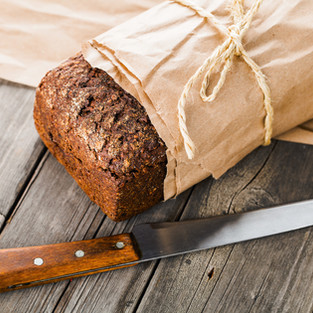Different Carbohydrates And Their Effects on Blood Glucose
- NinaG - Levantine Dietitian

- Oct 8, 2018
- 3 min read
When you eat a carbohydrate (these are starchy foods, whole grains, fruit, milk, yogurt, or food or drinks with added sugar), your blood sugars rise at different rates, and fall at different rates.
The best way to distinguish between these different reaction speeds of carbohydrates is to lump them into three main subcategories: the sweet or simple ones, refined or starchy ones low in fiber, and the higher fiber whole grain ones.

Carbohydrate Quality is Important:
More processed things often have less fiber, more fat, more sodium, and more preservatives
Processed foods usually don't have the components that feed or grow your intestinal bacteria and keep your metabolism fast, young and thriving
The more natural the food, the more vitamins typically exist within the food, and the more natural the vitamin or mineral, the better the vitamin is absorbed
Even though a carbohydrate may be healthy and high in fiber, it will still raise blood glucose. Remember if you eat too much carb, or a meal that only contains carb, your blood sugars will still be higher than the ideal curve.
So wouldn't you want more vitamins, minerals and the digestion of a healthy 20 -year old? Then eat natural.
Another way of visualizing how foods affect glucose is through graphing it out. If you were to check your blood sugars continuously, you could get an idea of how different foods affect your body. But since that information already exists, skip the experiments- this graph below can give you a better idea:

Imagine comparing eating 15 grams of carbohydrate from an orange (around 1/2 large orange) to 15 grams carbohydrate from mashed potatoes (1/2 cup) and also 15 grams carbohydrate from beans (1/2 cup). The orange (yellow line) spikes your blood sugars and typically drops them in around 30-45 minutes, giving you a short burst of a lot of energy. After 45 minutes that energy is basically gone. This is not bad, but it is a better source of energy to be had before an activity.
Eat the fruit before you go out for a walk or jog so your glucose doesn't dip too low while you are out, and your body uses that energy burst instead of having a blood sugar spike
Eating some mashed potato, however, is starchy, not sugary. The starch turns into sugar eventually, so it'll raise your glucose but typically takes around 1 hour to reach its peak. About 2 hours after eating the potato (or other starchy foods) your blood sugar drops back to baseline and your energy is gone. This is a great snack if you are planning to do an activity afterward that lasts 1-2 hours.
In contrast, high fiber whole grains (the blue line) are so complex that your stomach works for around 2 hours to break down the carbohydrate fibers into their more easily absorbable form (glucose).
As a result, those 15 grams of carbohydrate from high fiber whole grains are absorbed more slowly and steadily into the bloodstream, raising the glucose without seeing it spike, and giving the body a more consistent energy source.
This is the ideal carbohydrate for a meal, because it will provide you energy for around 4-5 total hours, or basically until the next meal of you are sedentary during that time.
The Bottom Line
Try these tricks out- eat whole grains, beans, or lentils with your meals every 4-5 hours. If you are active between the meal, have a snack of one fruit serving to give your body a little energy burst. Talk with me for more meal and snack ideas!













Comments